
Poggibonsi, lively town of the Chianti area, is located along the ancient Francigena road. The Fortress of Poggio Imperiale, it is a Medici Fortress built between 1484 and 1510 planed from Giuliano da Sangallo. It has developed on a pre-existent high-medieval centre which has been destroyed from the citizens of Florence in 1115. Because of this the people living there moved to the Borgo Marturi which was already active during the first years of the 12th century because it was on the borderline with three States: Florence, Siena and Volterra. Overmore it was collocated next to the confluence of two rivers, Staggia and Foci, in the Elsa river. In 1155 Guido Guerra of the Guidi conts family, began, together with Sieneses, the construction of a new town on the Poggio Bonizio, therefore under the government of the Ghibelline Siena. In 1270 the inhabitants of Florence destroyed the new centre and forbid to rebuilt it. Anyway, in 1313 it was inaugurated again and called Poggiobonizio, then Enrico VII started the rebuilding of the town which took the name of Poggio Imperiale in honor of the emperor. The defeat of Siena from Florence, involved even the occupancy of Poggibonsi. Lorenzo the Magnificent ordered the project of Poggio Imperiale Fortress to Giuliano da Sangallo. Poggibonsi passed a long period of stalemate because of the Spanish control (Cateau-Cambresis treaty in 1559) and for the domenance of the Lorenas (death of the last progeny of Medici family in 1737, Giangastone). Neither the Empire of Napoleone nor the Restoration or the Unit of Italy could rippled this long period of stall. The actual revival started at the beginning of 20th century together with a big industrial growth, mainly of the wine and glass industries. Dated at this period are some important urbans works such as the breaking of the town walls. During the Second World War Poggibonsi had been affected by violent fights. Between december 1943 and april 1944 it has been attached from 50 air raids. This is why Poggibonsi has a modern and dimanic aspect, and it is an active agricultural manufacturing center with severals winehouses and severals furniture stores. The Poggibonsi Municipality is excavating inside the Rocca Imperiale in order to discover the ancient houses basements and a high-medieval necropolis. A lot of objects, manufactured products, human rests have been found of the native populations which mainly subsisted on domestic animals farming. It has been done also a historical-naturalistic path where are referenced some botanical species.
Main monuments: The Palazzo Comunale - built between 1818 and 1871 has an interesting collection of works (more than 100) of contemporary artists. Palazzo Pretorio - the ancient City Hall is a medieval structure that has been often modified. it is made of a stone basement and a bricks structure layed upon it but delimitated by a frame with a molding stone carved. Another similar frame, just down the roof, borders the whole building. On the facade are visible many coats of arms of the ancient podestàs and of the Municipality heraldry. This architectural composition is common in many medieval pubblic buildings of Siena. Inside there is one of the most important tuscan paleontological museums. Collegiata di Santa Maria Assunta - built in 1863 on the ruins of the ancient romanic Church of S. Maria di Borgo Marturi. It has three neoclassical naves. Inside the building there is an interesting "Ressurrezione" of Botticini, a wood statue of S. Gregorio and an organ dated 1775 of Antonio e Filippo Tronci. Next to it there is the beautiful medieval belfry, rest of the ancient Marturi Castle. Chiesa di S. Lorenzo - the romanic-ghotic Church, modified more than once, has inside important works such as: S. Nicola di Neri di Bicci, a wood crucifix of Giovanni D'Agostino and the painting of the Madonna delle Grazie. The Church is also important because in 1495 has been the place where Girolamo Savonarola and the Emperor Carlo VIII met each others. Santuario di Romituzzo - built in 1400 preserves a picture of the Madonna della Neve (1300) considered miraculous. the picture is so called beacuse, in accordance with the legend it has been found under the snow from a farmer who overheard some plaints from it. The picture has a beautiful wood frame of the 15th century. Many are the ex-voto hanged on the walls, some of which dated 1500. At the end of 16th century are been built the belfry and the portico bordering the church. Chiesa di S. Lucchese - it is a wonderful example of the tuscan gothic architecture; built in 1252 in onor of S. Lucchese the founder of the Franciscan monks order. The Church has only one nave where there are various beautiful and valiable artistic works: one Immaculate Conception of terracotta of Giovanni della Robbia, two frescoes by Bartolo di Fredi ( famous for his Madonna del Cardellino), in the chapel on the left is possible to see the relics of S. Lucchese and the frescoes of Taddeo Gaddi and Cennino Cennini. There are also some frescos of Arturo Viligiardi (sienese simbolist, pupil of Duprè). In the sacristy there is a closet with inside 17 beautiful formelle painted by Memmo di Filippuccio. In the nearby convent there are chapter house of the end of 13th century, the cloisters dated at 600 and the refectory of the 400 where has been painted the multiplication of bread and fish of Gerino da Pistoia.
|
|---|
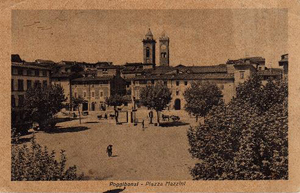
Piazza Mazzini
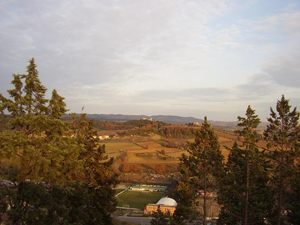
Panorama
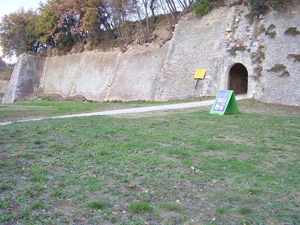
Porta al Cassero
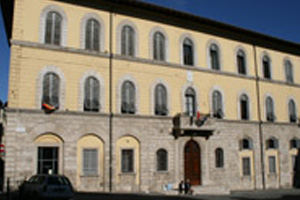
Palazzo Comunale
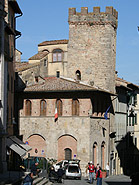
Palazzo Peetorio
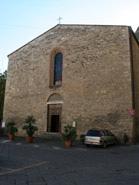
Chiesa di San Lorenzo
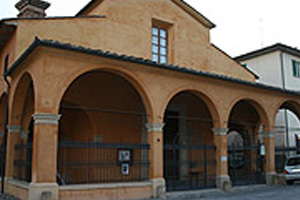
Romituzzo
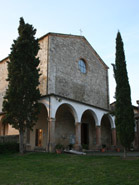
Chiesa di San Lucchese
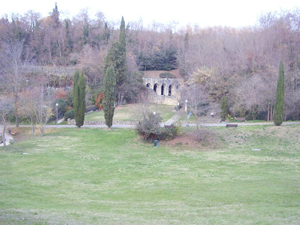
Fonte delle Fate
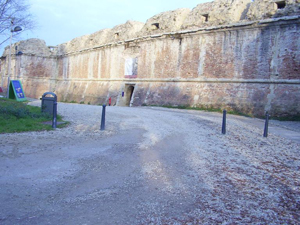
Mura
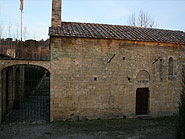
La Magione di San Giovanni al Ponte
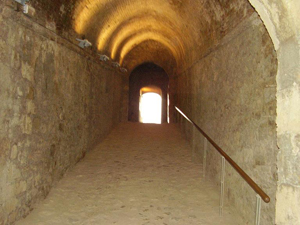
Ingresso Cassero
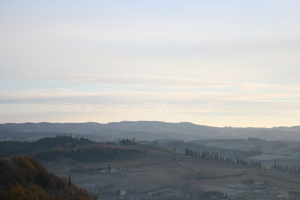
Panorama
